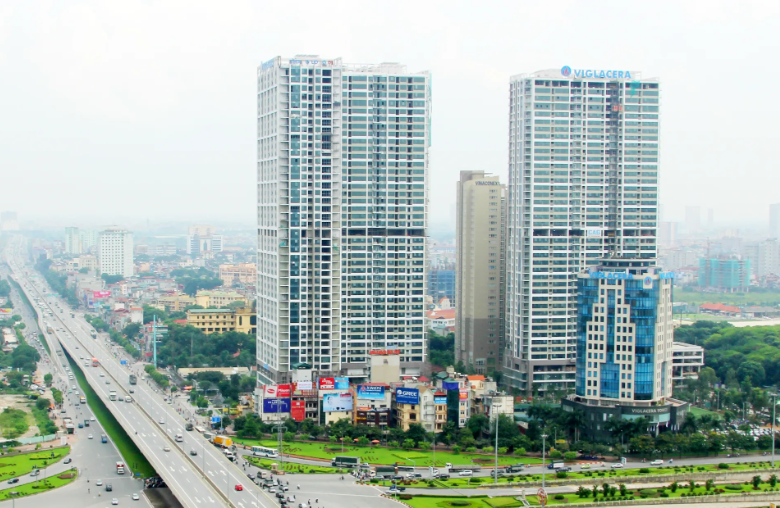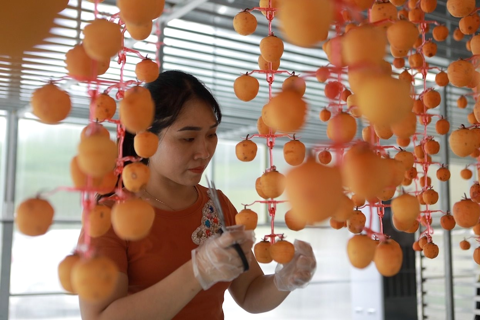Vietnam businesses invest US$161 million in green projects last year
Scaling up high-quality carbon credit supply, supported by clear and consistent policy frameworks and adequate infrastructure, is essential to attract investment.
THE HANOI TIMES — Vietnam’s private sector committed US$161 million to green investments in 2024, a modest contribution compared to other major economies in Southeast Asia, according to the newly released Southeast Asia’s Green Economy report by Bain & Company, GenZero, Google, Standard Chartered, and Temasek.

Thang Long Number One – Vietnam’s first green building certified by the Ministry of Construction. Photo: Cong Hung/The Hanoi Times
The report shows that private green investment in the SEA-6 (Indonesia, Malaysia, Philippines, Singapore, Thailand, and Vietnam) totaled $8 billion last year, up 43% from 2023. Singapore and Malaysia led the region, attracting $2.68 billion and $2.3 billion, respectively, rocketing 194% and 124%. In contrast, Vietnam, along with Indonesia, the Philippines, and Thailand, experienced double-digit declines in green capital inflows.
In Vietnam, private green investment accounted for just 2% of the total, as the focus shifted from solar energy in 2023 to transport and wind power in 2024, with only four transactions recorded. Overall, investment volume was down 19% year-on-year.
The report highlights Southeast Asia's contribution of 7.5% of global greenhouse gas emissions, its heavy reliance on fossil fuels, and its vulnerability to climate risks due to limited mitigation measures. It calls for urgent government interventions to alter the current trajectory and meet climate goals.
Franziska Zimmermann, Managing Director of Sustainability at Temasek, warned that with just five years to go until 2030, the window for action on climate change is closing fast. "We need to accelerate progress and focus on practical solutions that have a near-term impact," she said.
Experts emphasize the need for Southeast Asia to drive sustainable agriculture, next-generation power grids, and electric vehicle (EV) ecosystems. Agriculture provides 25-30% of employment through the palm oil, rubber, and rice sectors, but also contributes 30% of emissions and deforestation. Structural barriers, including fragmented production, weak infrastructure, complex regulations, and an underdeveloped carbon market, exacerbate the issue. To address these, solutions include adding value to products, promoting biofuels, reforming land use rights, and strengthening supply chains.
In the energy sector, the report recommends that ASEAN countries expand and modernize domestic grids while improving cross-border connectivity.
Road transport remains a major emitter, yet EV adoption in Southeast Asia remains low. A dual strategy is needed to stimulate demand and scale up domestic EV production, maintaining regional competitiveness while cutting emissions. Regional cooperation is also critical to develop supply chains for batteries, EVs, and charging infrastructure, leveraging local resources.
Southeast Asia faces a potential green investment gap of over $50 billion, with growing macroeconomic headwinds posing additional challenges. Enabling policies, workforce development, and public-private partnerships are key to closing this gap. ASEAN countries must also build financial support systems for climate and energy transition efforts, including carbon markets and green AI solutions.
Equally important are ensuring competitive energy prices to attract renewable energy investment, and transparent compliance mechanisms, registries and trading platforms to build confidence in carbon markets. Anshari Rahman, Director of Policy and Analytics at GenZero, acknowledged the recent progress in Southeast Asia's carbon markets, but stressed that much work remains to be done.
"Scaling up the supply of high-quality carbon credits, supported by a clear and consistent policy framework and adequate infrastructure, is essential to attract investment and stimulate demand," he said.
Dale Hardcastle, Partner and Co-Director of the Global Sustainability Innovation Center at Bain & Company, emphasized the dual need for significant emissions reductions and sustained economic growth. Achieving both would not only help meet climate targets but also boost resilience and long-term prosperity.
The report concludes that deeper regional cooperation across the Asia-Pacific region could help the SEA-6 achieve up to $120 billion in additional economic growth, create 900,000 new jobs, and halve the emissions gap by 2030.










